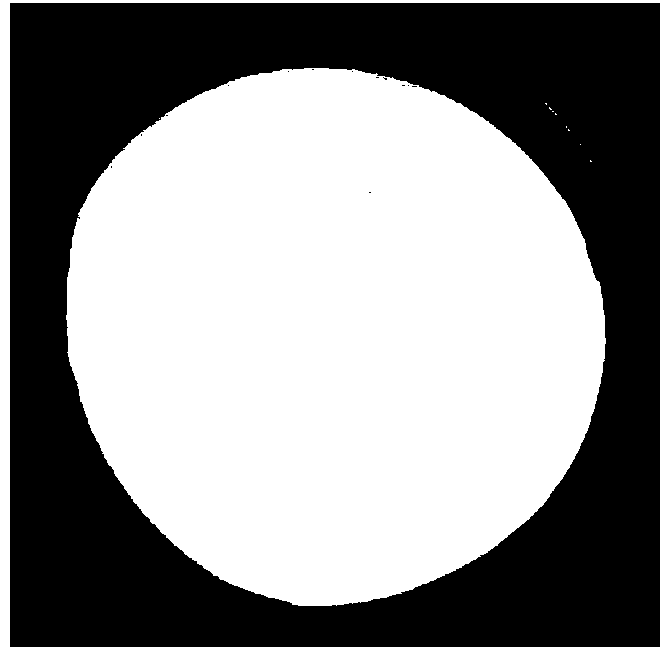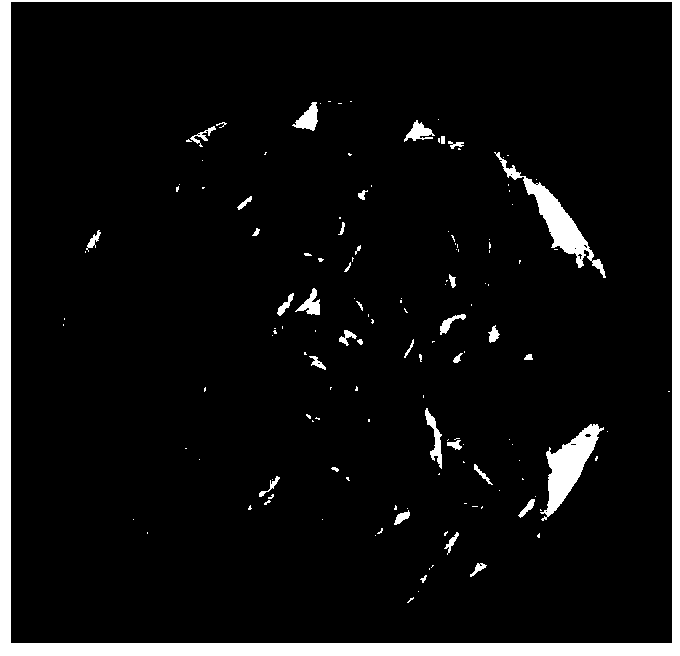Method for quickly and qualitatively identifying new and old sunflower seeds based on TTC (triphenyltetrazolium chloride) dyeing process
A qualitative identification, sunflower seed technology, applied in the direction of material analysis by observing the influence of chemical indicators, and analysis by chemical reaction of materials, etc. There are no problems such as identification methods for seeds, and the effects of high discrimination accuracy, simple method, and reliable qualitative determination are achieved.
- Summary
- Abstract
- Description
- Claims
- Application Information
AI Technical Summary
Problems solved by technology
Method used
Image
Examples
Embodiment 1
[0030] Described a kind of method based on TTC staining fast qualitative identification sunflower seed old seed, comprises the following steps:
[0031] (1) Spread the paper on the bottom of the Petri dish;
[0032] (2) Shell the sunflower seeds, remove part of the tail, and get melon seeds;
[0033] (3) Use TTC solution to soak the melon seeds, after filtering, spread the melon seeds on the bottom of the petri dish;
[0034] (4) Use a dropper to draw about 10ml of TTC solution, and evenly drop it on the melon seeds;
[0035] (5) The temperature of the incubator needs to be preheated to 48°C in advance, and the culture dish is placed in the incubator at 45°C for 30 minutes.
[0036] (6) Take out and open the petri dish, and immediately observe its color development quickly;
[0037] (7) The melon seeds that are dyed red are the new sunflower seeds with vitality, and the melon seeds that are not dyed are the old sunflower seeds that have no vitality or less vitality.
[003...
Embodiment 2
[0042] Rapid qualitative identification of new sunflower seeds using chemical reagents (TTC staining method).
[0043] The instruments and tools used are as follows:
[0044] Constant temperature incubator, electronic balance (0.01g), volumetric flask, beaker (1000ml, 200ml), glass rod, brown
[0045] Colored reagent bottles, thermometer, petri dish, round white paper (the same size as the bottom of the petri dish).
[0046] The reagent solutions used were prepared as follows:
[0047] Phosphate buffer (pH6~7) configuration:
[0048] Weigh 5.45g of sodium dihydrogen phosphate and 3.79g of disodium hydrogen phosphate, add appropriate amount of distilled water to fully dissolve them, transfer them to a 1000ml volumetric flask to constant volume.
[0049] Configuration of TTC solution (2.0%):
[0050] Weigh 2g of triphenyltetrazolium chloride (TTC) sample, put it into a 100ml volumetric flask, add pre-prepared phosphate buffer solution (pH6~7) to make it up to the mark, fully...
PUM
 Login to View More
Login to View More Abstract
Description
Claims
Application Information
 Login to View More
Login to View More - R&D
- Intellectual Property
- Life Sciences
- Materials
- Tech Scout
- Unparalleled Data Quality
- Higher Quality Content
- 60% Fewer Hallucinations
Browse by: Latest US Patents, China's latest patents, Technical Efficacy Thesaurus, Application Domain, Technology Topic, Popular Technical Reports.
© 2025 PatSnap. All rights reserved.Legal|Privacy policy|Modern Slavery Act Transparency Statement|Sitemap|About US| Contact US: help@patsnap.com



